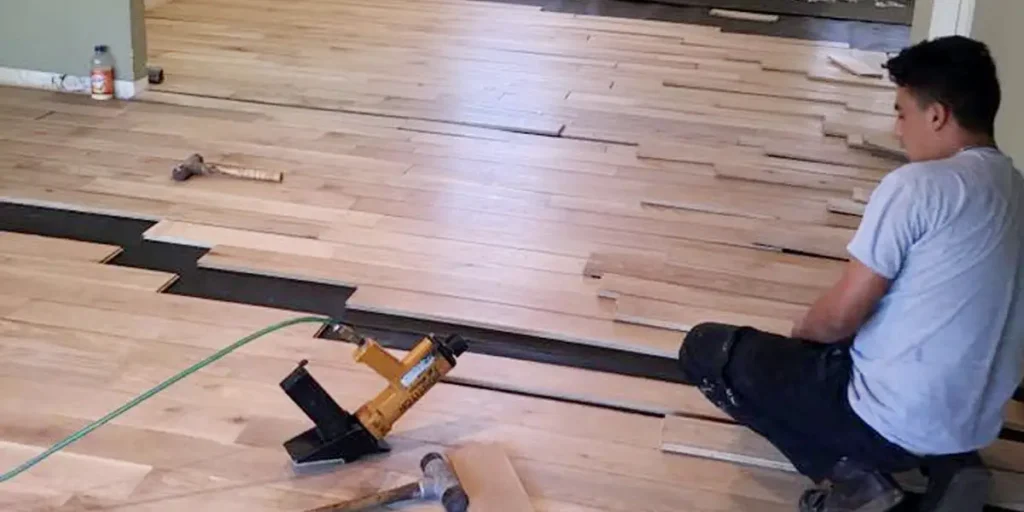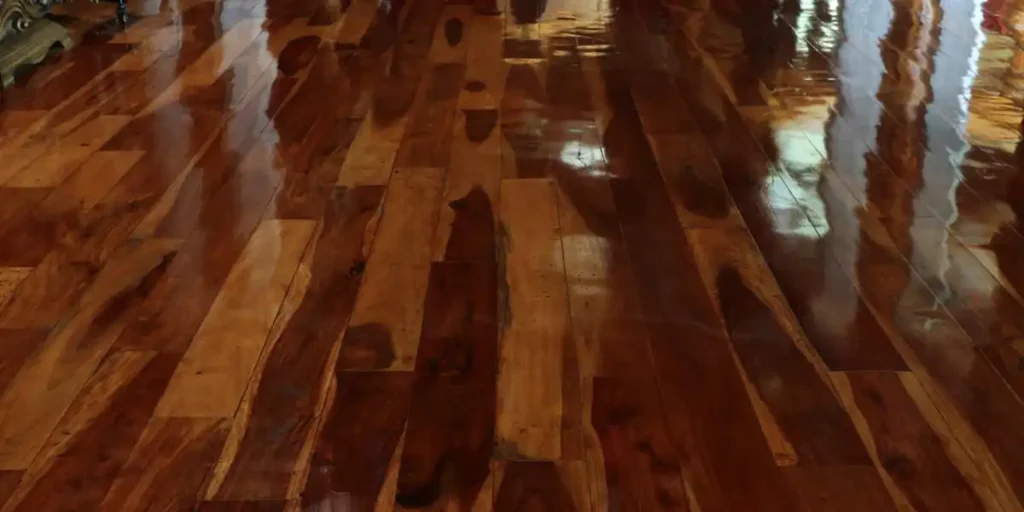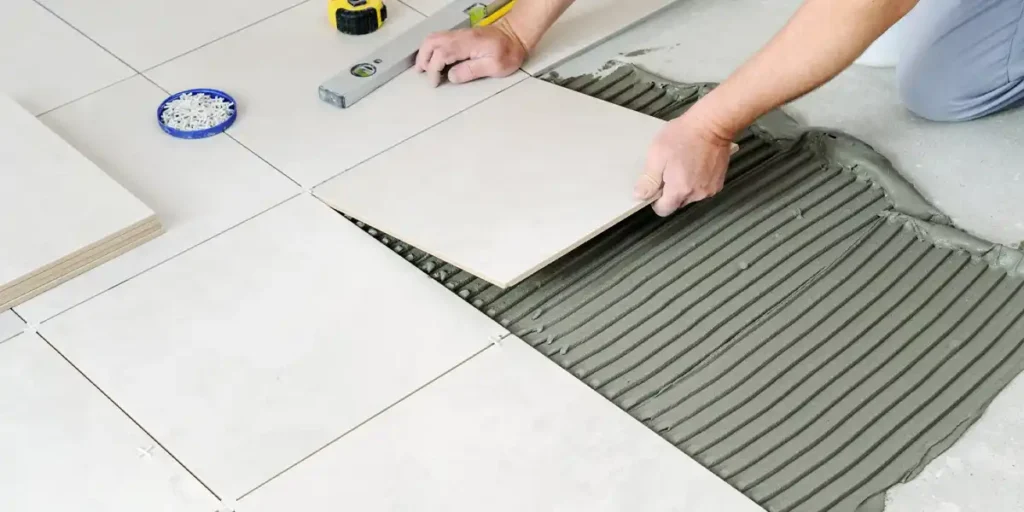On average, well-maintained laminate flooring lasts between 15 to 25 years, depending on its quality, installation, and usage. While this range gives a general idea, several factors contribute to how long laminate flooring lasts.
Understanding these factors helps you make informed decisions to maximize the life of your floors.
Factors Influencing Laminate Flooring Lifespan
Quality of the Laminate
The quality of your laminate flooring is perhaps the most significant factor in determining its lifespan. High-quality laminate flooring has a thicker core and a durable wear layer, making it resistant to scratches, dents, and wear. Reputable brands also often provide warranties that reflect the expected durability of their products.
Professional vs. DIY Installation
Poor installation can lead to uneven surfaces, weak locking mechanisms, or gaps that invite moisture and dirt, accelerating wear and tear. Professional installation ensures precision, minimizing risks like buckling or warping over time.
Traffic and Usage
Laminate flooring in high-traffic areas, such as entryways and living rooms, experiences more wear compared to low-traffic spaces like bedrooms. Households with children, pets, or heavy furniture will notice quicker degradation in busy areas unless precautions are taken.
Maintenance Practices
Routine cleaning and appropriate care are crucial. Spills left unattended can lead to stains or water damage, while abrasive cleaning tools may scratch the surface. Using manufacturer-recommended cleaners ensures your floors remain in optimal condition.
Environmental Conditions
Laminate flooring is sensitive to moisture and humidity. Excessive exposure can cause the core layer to swell or warp. Keeping your home’s temperature and humidity levels stable significantly extends the flooring’s lifespan.
Extending the Life of Your Laminate Floors
Maximizing the lifespan of laminate flooring requires consistent care and adopting smart practices to protect its surface. These small but impactful changes in your daily habits can keep your floors looking great for years to come.
Use Protective Measures
Place rugs or mats at entryways to trap dirt, dust, and moisture before they reach your laminate flooring. High-traffic areas like hallways and living rooms also benefit from area rugs, reducing wear and tear on exposed surfaces. Choose non-slip mats and ensure they are made of materials safe for laminate to avoid discoloration or scratches.
Furniture Pads
Add felt pads under furniture legs to protect the laminate from scratches caused by movement. This is especially important for heavier items like sofas, tables, and chairs. Regularly check and replace worn pads to ensure they remain effective. Consider using furniture sliders for larger pieces to minimize floor damage during rearrangements.
Clean Spills Immediately
Laminate flooring is not waterproof, so cleaning spills as soon as they occur is crucial to prevent water damage. Use a damp microfiber cloth to wipe up liquids and dry the area thoroughly to avoid seepage into seams, which can lead to warping or swelling.
Routine Maintenance
Regular sweeping or vacuuming removes abrasive particles like dirt and debris that can scratch the laminate’s protective wear layer. Use a soft-bristled broom or a vacuum designed for hard floors to avoid damage. Damp mop weekly with a laminate-safe cleaner for a deeper clean, ensuring the mop is well-wrung to prevent excess moisture.
Climate Control
Maintaining a stable indoor environment with moderate temperatures and humidity levels is essential. Use dehumidifiers or air conditioning in humid climates to prevent swelling and warping, and avoid exposing the flooring to direct sunlight to minimize fading.
By following these tips, you can extend the life of your laminate flooring and preserve its appearance and functionality for many years.
Signs It’s Time to Replace Laminate Flooring
While laminate flooring is durable, it doesn’t last forever. Recognizing when it’s time to replace your floors is essential for maintaining a safe and attractive space:
- Visible Wear: Large scratches, dents, or fading that cleaning and repair can’t fix.
- Buckling or Warping: Signs of moisture damage, often in kitchens, bathrooms, or basements.
- Widespread Stains: Permanent discoloration that diminishes the flooring’s appeal.
- Structural Damage: Loose planks, gaps, or uneven surfaces affecting functionality.
- Outdated Appearance: If your floors no longer match your aesthetic preferences, a replacement may be in order.
Final Thoughts
So, how long does laminate flooring last? While the typical lifespan is 15 to 25 years, your choices and maintenance habits can significantly influence this range.
By investing in quality materials, ensuring proper installation, and practicing regular care, you can enjoy your laminate flooring’s beauty and functionality for decades.
Ready to upgrade or replace your floors? Contact Cardenas Flooring to explore durable and stylish options that fit your lifestyle and budget. Your dream laminated floors are just a decision away!
FAQs
What is the best way to maintain laminate flooring to ensure it lasts longer?
To maximize the lifespan of laminate flooring, sweep or vacuum regularly to remove debris that can scratch the surface. Use a damp mop with laminate-safe cleaners for deeper cleaning and avoid excessive water or steam. Protect high-traffic areas with rugs and use felt pads under furniture legs to prevent dents. Address spills immediately to prevent moisture damage, and keep indoor humidity levels stable to avoid warping or swelling.
Can laminate flooring be refinished like hardwood?
Unlike hardwood, laminate flooring cannot be sanded or refinished. The decorative layer on laminate floors is a printed image protected by a clear wear layer, which doesn’t allow for sanding. Minor scratches or scuffs can often be repaired with laminate repair kits, but significant damage typically requires plank replacement. Choosing a high-quality laminate with a thick wear layer can help minimize the need for repairs.
How do I know if my laminate flooring needs replacing?
Signs that your laminate flooring may need replacing include deep scratches, extensive water damage such as buckling or swelling, and widespread discoloration that cannot be repaired. Other signs include loose or warped planks and surfaces that have lost their protective wear layer, leading to noticeable deterioration. If repairs are no longer cost-effective, it’s time to consider a replacement.
Is laminate flooring suitable for households with pets?
Yes, laminate flooring is generally a good choice for homes with pets due to its scratch resistance and easy maintenance. Opt for a laminate with a thicker wear layer to withstand claws and high traffic. Use rugs in areas where pets play frequently and clean up accidents promptly to prevent moisture damage. Regularly trimming pet nails also reduces the risk of scratches.
Can I install laminate flooring in moisture-prone areas like kitchens or bathrooms?
While standard laminate flooring is not recommended for moisture-prone areas, water-resistant or waterproof laminate options are available for kitchens and bathrooms. These products have enhanced cores and sealed edges to minimize water penetration. Even with waterproof laminate, it’s essential to clean up spills quickly and maintain proper ventilation to avoid prolonged exposure to moisture. Always check product specifications before installation.




